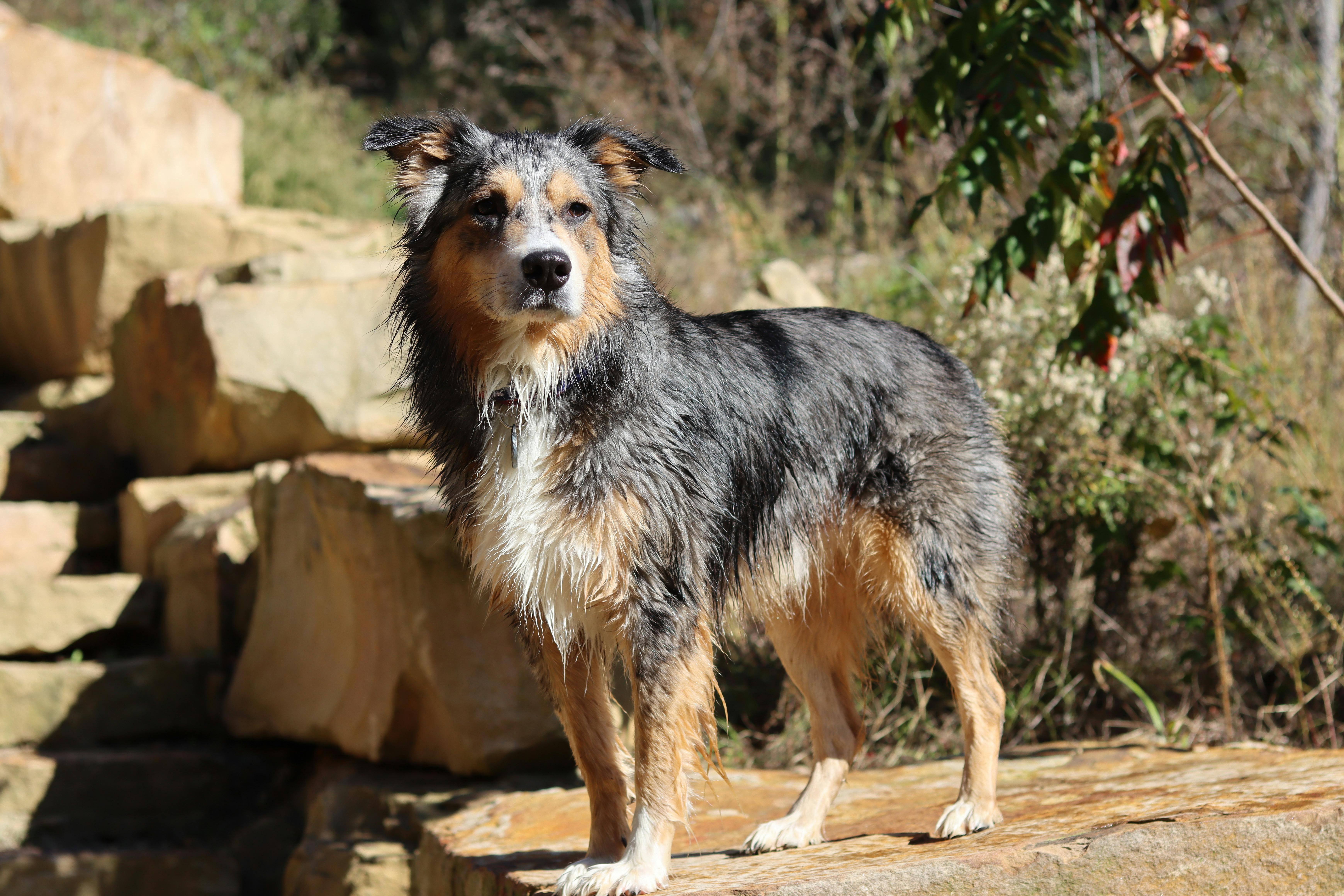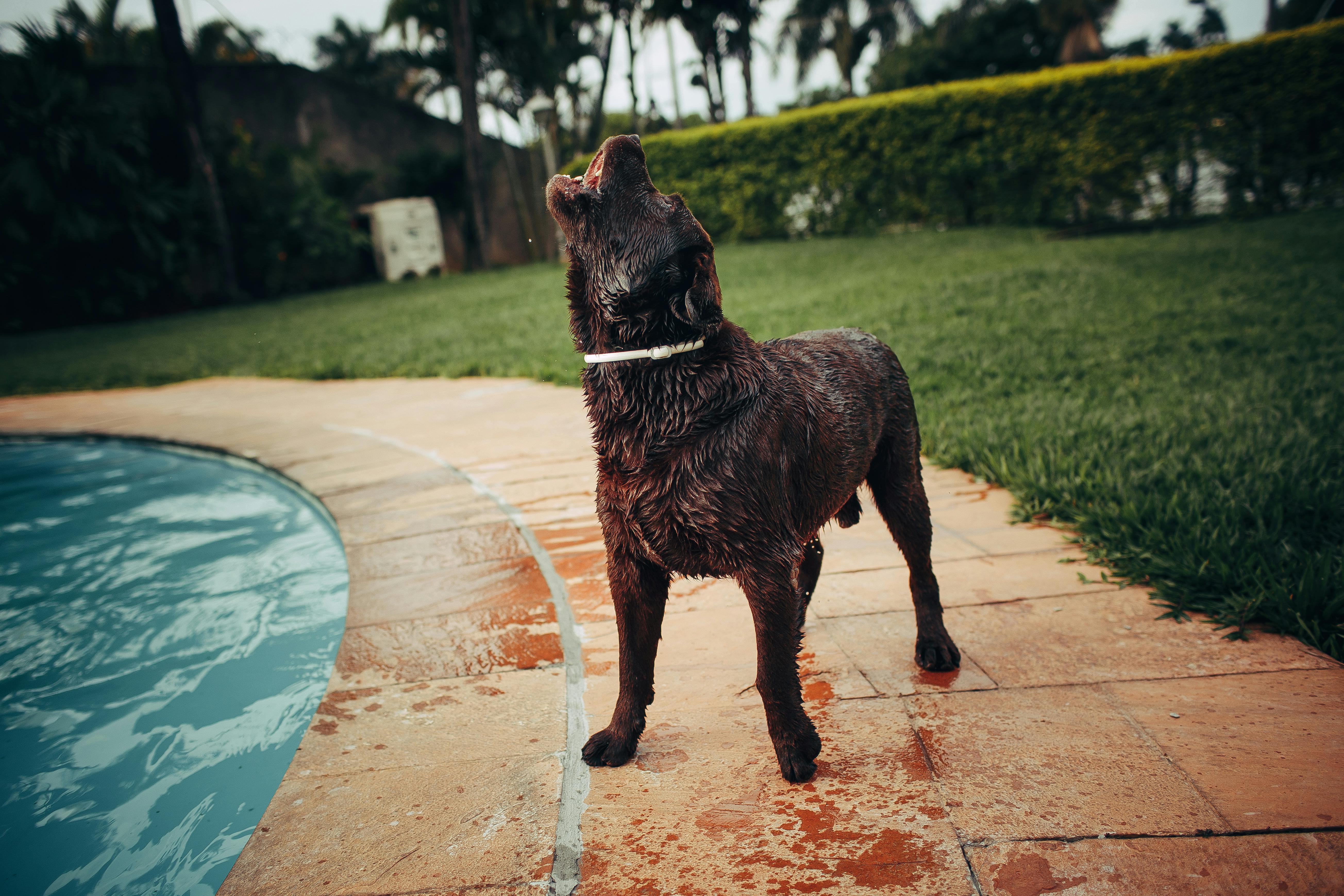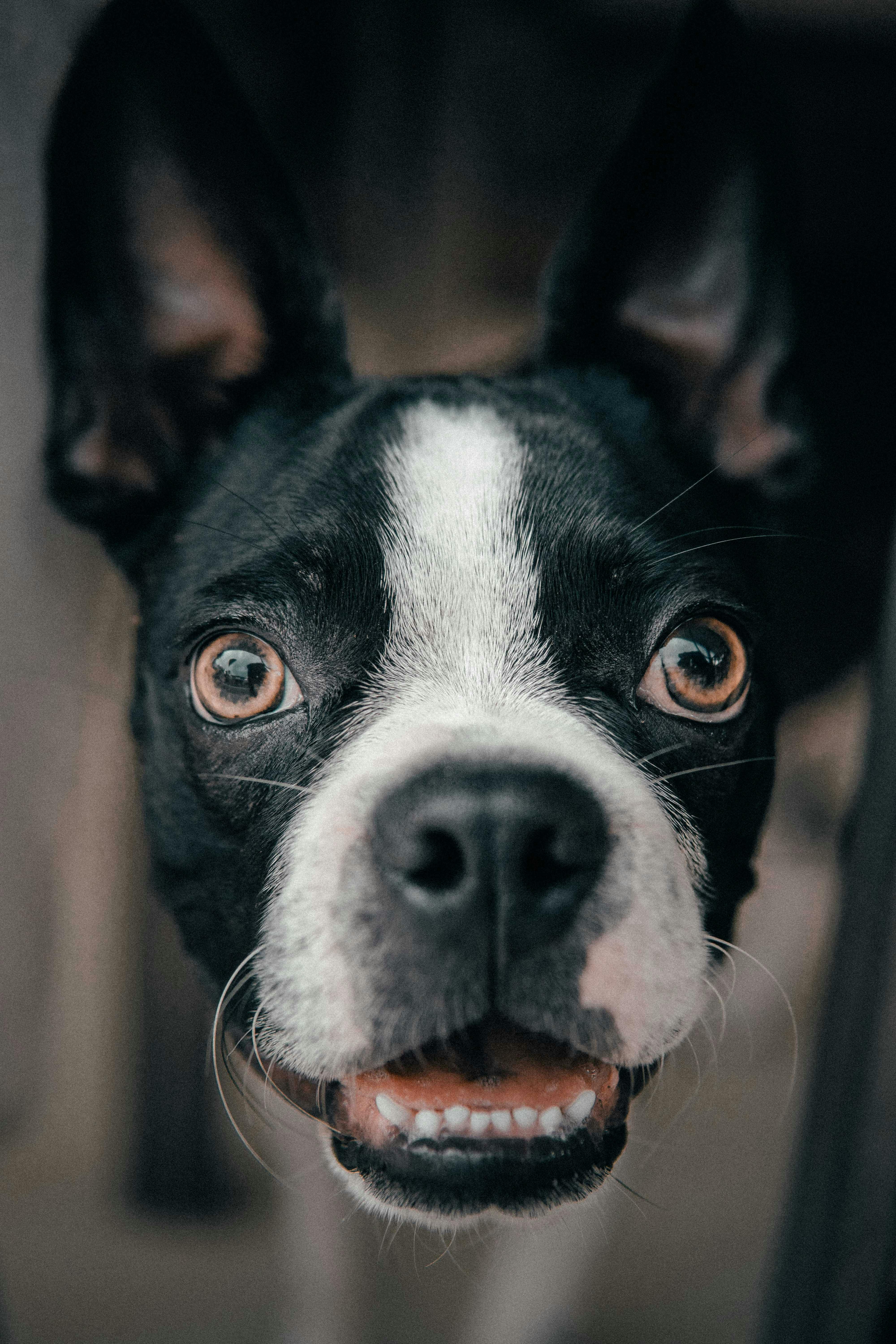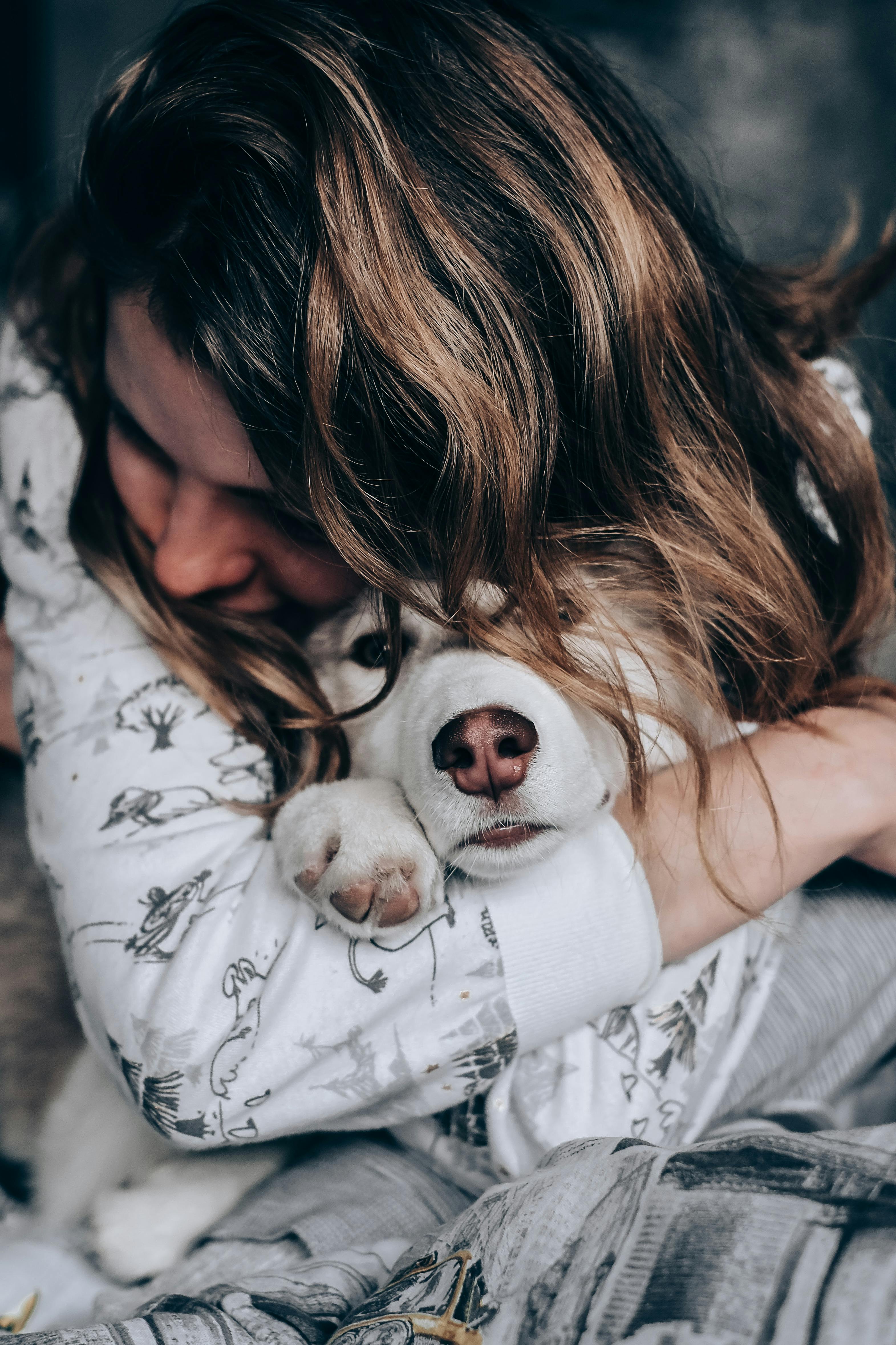Have you ever wondered, why do dogs have wet noses? This curious characteristic not only gives our furry friends their unique charm but also serves several fascinating purposes! In this blog post, we will explore the surprising truth behind this common yet intriguing feature. Many pet owners ask, do wet noses mean a dog is healthy? Or what do dogs’ noses tell us about their emotions? Understanding the science behind a dog’s nose can deepen your bond with your canine companion and help you care for them better. Did you know that a dog’s nose can actually help them detect scents better, and it also plays a role in their temperature regulation? This article will dive into these questions and more, revealing why this little detail is so significant in the canine world. So, whether you’re a new dog owner or a seasoned pet parent, get ready to uncover the mysteries of dog noses and learn how this seemingly simple characteristic can hold the key to understanding your beloved pet better! Stay tuned, as we unravel the secrets behind why dogs have wet noses and what it means for their health and happiness!
The Science Behind Wet Noses: Why Do Dogs Have This Unique Trait?

Dogs are often called man’s best friend, and a lot of the reason for that is the unique characteristics they have. One of the most interesting traits about dogs is their wet noses. Ever wondered why do dogs have wet noses? This quirk is not just an adorable feature; it has scientific reasons behind it. Let’s dive into the surprising truth about why dogs’ noses are always wet and how it benefits them.
The Science Behind Wet Noses
Dogs have wet noses primarily to help them smell better. The surface of a dog’s nose has a thin layer of moisture that helps to trap scent particles in the air. This moisture increases their sense of smell, which is already thousands of times more acute than that of humans. When the particles stick to the wet surface, it makes it easier for dogs to detect scents.
- Scent Detection: Dogs have around 300 million scent receptors in their noses, compared to about 5 million in humans. The wet nose enhances this ability hugely.
- Cooling Mechanism: Just like humans sweat, dogs use their noses to help regulate body temperature. Moisture evaporating from their noses can cool them down.
- Health Indicator: A dog’s nose can also be an indicator of their health. A wet, cool nose often signifies a healthy dog, while a dry or warm nose might indicate illness or dehydration.
Why Are Wet Noses Important?
Wet noses play a crucial role in various aspects of a dog’s life. Here’s how:
- Enhanced Smelling: The more moisture, the better they can smell. This is essential for hunting, search-and-rescue missions, and even detecting medical conditions in humans.
- Social Interactions: Dogs use their noses to gather information about other dogs and their environments. A wet nose can indicate excitement or curiosity.
- Temperature Regulation: Dogs don’t sweat like humans. Their wet noses help them cool down in warm weather.
Historical Context of Wet Noses
Dogs have evolved over thousands of years from wolves, and their wet noses have developed as a survival trait. Early dogs depended on their keen sense of smell for hunting and foraging. The evolution of a wet nose helped them track prey and stay aware of their surroundings.
In ancient times, humans began to domesticate dogs for various roles, including hunting, guarding, and companionship. The wet nose, which improved their ability to detect scents, made them more effective in these roles.
Fun Facts About Dogs’ Noses
- Dogs’ noses are as unique as human fingerprints. Each dog has a distinct nose print.
- The wetness of a dog’s nose can change based on the environment. For example, when it’s humid, their noses may stay wetter.
- Puppies are usually born with dry noses, and they develop the wet nose trait as they grow older.
The Difference Between Wet and Dry Noses
Let’s look at some differences between wet and dry noses in dogs:
Wet Nose:
- Typically signifies a healthy dog.
- Helps in better scent detection.
- Can cool the dog down.
Dry Nose:
- May indicate dehydration or illness.
- Can be caused by environmental factors, such as heat or dry air.
- Not all dry noses mean a dog is sick; some dogs naturally have drier noses.
Practical Examples of Wet Noses in Dogs
- Tracking Dogs: Bloodhounds are known for their incredible sense of smell, which is enhanced by their wet noses. They can track scents over great distances.
- Therapy Dogs: Many therapy dogs use their keen sense of smell to detect emotional changes in humans, helping them provide comfort and support.
Why Do Dogs Have Wet Noses? The Bottom Line
So, why do dogs have wet noses? It’s a fascinating combination of biology and evolution. The wetness not only enhances their sense of smell but also helps in regulating their body temperature and indicates their health.
Just like humans have unique traits, every dog has its own wet nose story, shaped by their environment and genetic background. Understanding the science behind this feature can deepen the bond between you and your furry friend. Whether you’re a dog owner or just a dog lover, knowing about their wet noses adds to the charm of these lovable companions.
Next time you see a dog with a wet nose, remember, there’s a lot more to it than just cuteness! Embrace the complexities of your pet’s biology, and you’ll find even more reasons to appreciate them.
Top 5 Reasons Your Dog’s Nose is Always Wet: Unveiling the Mystery!

Have you ever wondered why do dogs have wet noses? It’s a question that many people ask, and there’s actually a lot more to it than you might think. The common belief is that a dog’s wet nose is just a sign of being healthy, but there’s much more involved in this curious canine characteristic. Let’s dive into the top 5 reasons your dog’s nose is always wet, unveiling the mystery behind this fascinating feature.
1. Dogs Sweat Through Their Noses
One of the interesting facts about dogs is that they don’t sweat like humans do. Instead, they have sweat glands primarily located in their paw pads. However, their noses also plays a role in regulating their body temperature. The moisture on a dog’s nose helps cool them down. When a dog is hot, their body tends to increase the moisture levels in their nose, making it wet. This helps to keep them cool, especially during warm weather.
2. Enhanced Sense of Smell
A dog’s nose is one of its most powerful tools. The wetness helps to trap scent particles in the air. This is crucial for their ability to smell and identify different scents. Did you know that dogs have up to 300 million scent receptors in their noses, compared to a human’s mere 5 million? This incredible sense of smell is why dogs are often used in search and rescue operations, as well as in detecting drugs or explosives. The wetness of their noses enhances this capability, making it easier for them to pick up on scents.
3. Communication with Other Dogs
Dogs communicates not just through barks and howls, but also through their noses. A wet nose is a sign of a friendly and approachable dog. When your dog meets another dog, they often sniff each other’s noses. This is a way of gathering information about one another, such as their health, mood, and even what they’ve eaten. A wet nose can signal to other dogs that they are relaxed and ready to socialize.
4. Maintaining Nasal Moisture
Dogs are prone to various environmental factors, and one of the main reasons for a wet nose is to keep the nasal passages moist. A moist nose can help prevent irritation and infections, just like humans benefit from keeping their sinuses hydrated. Think of it like your dog’s natural way of staying healthy. If a dog’s nose becomes dry, it might indicate dehydration or other health issues. So, a consistently wet nose is often a good sign of overall health.
5. Behavioral Factors
Sometimes, a dog’s nose is wet due to behavioral causes. When dogs are excited or anxious, they can produce more saliva, which can make their noses wet. For instance, if your dog is about to go for a walk or sees you preparing their food, you might notice their nose getting wet. This is all part of their natural behavior and response to stimuli around them.
Quick Facts About Dog Noses
- Dogs’ noses are always cold, which helps them regulate their body temperature.
- The wetness is not just for show; it serves multiple practical purposes.
- Dogs can “sweat” through their noses, but it’s minimal compared to other animals.
- The moisture on their noses helps dogs smell better by trapping scent particles.
- If a dog’s nose is dry for an extended period, it’s a good idea to consult a vet.
FAQs About Wet Dog Noses
Why is my dog’s nose dry?
A dry nose can sometimes indicate dehydration, fever, or other health problems. If it’s dry for a long time, consider visiting your veterinarian.Can dogs have allergies that affect their noses?
Yes, dogs can suffer from seasonal allergies or food allergies that may lead to a dry or irritated nose.Is it normal for a dog’s nose to be wet all the time?
Yes, most dogs have wet noses most of the time, which is perfectly normal.Should I worry if my dog’s nose is not wet?
Not necessarily, but if there are other symptoms present, such as lethargy or loss of appetite, it might be worth checking with a vet.
Understanding why do dogs have wet noses not only helps us appreciate our furry friends better but also provides insight into their health and behaviors. The next time you lean down to give your pup some love, remember that wet nose is more than just an adorable quirk; it’s a fascinating window into their world.
Is a Wet Nose a Sign of Health? Discover What Your Dog’s Nose Says About Them

Dogs are often called man’s best friend, and their health is a big concern for many pet owners. One question that comes up frequently is, “Is a wet nose a sign of health?” You might have noticed that your dog’s nose feels cool and damp but what does it really mean? Let’s dive into this topic and discover what your dog’s nose says about them, and why do dogs have wet noses in the first place.
Why Do Dogs Have Wet Noses?
Dogs have wet noses for a few reasons. The most prominent one is that it helps them to smell better. You might think of your dog’s nose as a supercharged sensor. Here’s how it works:
- Moisture enhances scent: A wet nose helps to capture scent particles from the air, making it easier for dogs to detect smells.
- Cooling Mechanism: Dogs don’t sweat like humans do. Their noses help regulate their body temperature. When a dog’s nose is wet, it can help cool them down.
- Health Indicator: A wet nose can sometimes be an indicator of health, but it’s not the only sign to look for.
The Surprising Truth About Wet Noses
While a wet nose is often associated with a healthy dog, it doesn’t mean a dry nose is a cause for alarm. Here are some surprising facts:
- Not Always Wet: Dogs can have dry noses for many reasons, including weather conditions, illness, or even just waking up.
- Variations: Some breeds naturally have drier noses due to their genetics.
- Illness Signs: A dry nose with other symptoms like lethargy or loss of appetite might indicate something more serious.
What A Wet Nose Might Indicate
It’s important to remember that a dog’s health is more than just their nose. Here are some things to consider when evaluating whether your dog is healthy or not:
- Normal Temperature: A healthy dog usually has a normal body temperature between 101°F and 102.5°F.
- Behavior Changes: If your dog is more lethargic or not eating, these signs can indicate illness regardless of nose wetness.
- Nasal Discharge: If your dog has mucus or discharge from the nose, that could indicate allergies or an infection.
Signs of Healthy Dogs
Understanding more about your dog’s health can help you spot potential issues early. Look out for these signs:
- Bright Eyes: Clear, bright eyes often indicate good health.
- Shiny Coat: A healthy coat should look shiny and clean without excessive shedding.
- Active Behavior: Dogs who play and engage with you are more likely to be healthy.
- Normal Appetite: Dogs should have a consistent appetite. Changes can signal problems.
Factors That Affect Nose Wetness
There are several factors that can affect whether your dog’s nose is wet or dry. Knowing these can help you understand your pet better:
- Weather Conditions: Hot or dry weather can cause a dog’s nose to become dry.
- Hydration: Dehydration can lead to a dry nose.
- Sleep Cycle: A dog’s nose can dry out when they are sleeping and may take some time to become wet again.
Comparing Dogs with Wet and Dry Noses
Here’s a simple comparison of wet and dry noses in dogs:
Wet Nose:
- Better at smelling
- May indicate a healthy dog (but not always)
- Often cooler to the touch
Dry Nose:
- May indicate dehydration or illness (but can be normal)
- Warmer to the touch
- Might be common for certain breeds
Practical Examples of Nose Health
You might want to check your dog’s nose regularly. Here’s how you can assess it:
- Morning Check: After your dog wakes up, check the nose. It might be dry but that’s normal.
- Playtime Check: After an active play session, feel the nose. It may be wetter due to excitement.
- Behavior Analysis: If the nose is dry and your dog seems off, consider a vet visit.
A wet nose can provide some insights about your dog’s health, but it’s just one piece of the puzzle. Always look at the bigger picture, including their behavior and overall condition. If you ever have concerns, don’t hesitate to consult your veterinarian. They are the best resource for understanding your dog’s health, and they can provide tailored advice based on your dog’s unique needs.
How Do Wet Noses Help Dogs Detect Scents? The Amazing Sense of Smell Explained

Have you ever wonder why dogs have wet noses? It’s not just some random quirk of nature. These moist noses actually play a crucial role in the amazing sense of smell that dogs have. This article dives deep into how wet noses help dogs detect scents and the fascinating science behind it. It’s a surprising truth about our canine companions that many people don’t realize.
The Science Behind a Dog’s Nose
Dogs have an extraordinary sense of smell, estimated to be between 10,000 to 100,000 times more sensitive than that of humans. This incredible ability is largely because of their wet noses. But, how do wet noses help dogs detect scents?
Increased Surface Area: A dog’s nose is covered in a moist mucous membrane, which expands the surface area. The wetness helps to capture scent particles from the air, allowing dogs to gather more information about their environment.
Enhanced Olfactory Receptors: Dogs have around 300 million olfactory receptors in their noses, compared to about 5 million in humans. The wetness on their noses allows these receptors to function more effectively, improving their ability to identify scents.
Temperature Regulation: Wet noses also help in regulating a dog’s body temperature. By keeping their noses moist, dogs can help themselves stay cool while they sniff around and explore.
Signal for Communication: A dog’s wet nose can also serve as a form of communication. When dogs greet each other, they often use their noses to gather information about one another, and the wetness may indicate a healthy, alert dog.
Why Do Dogs Have Wet Noses?
So, why do dogs have wet noses, anyway? The moistness is not just for show. Here’s a breakdown of reasons for this unique feature:
- Scent Detection: As mentioned, the wet surface captures scent particles, enhancing their ability to detect smells.
- Health Indicator: A dog’s nose can be an indicator of health. A wet, cool nose typically means a dog is healthy, while a dry or warm nose could indicate illness.
- Cooling Mechanism: Dogs sweat through their noses, which helps to cool off their bodies, especially on hot days.
The Role of Wet Noses in Scent Detection
Understanding how wet noses assist in scent detection is fascinating. Here’s a closer look at the process:
- Sniffing: When dogs sniff, they inhale air through their noses, which helps to activate the scent receptors. Wet noses help trap these scent molecules.
- Breathing Out: After inhaling, dogs exhale through their mouths, which helps to push out the air and allows more air to flow in, maximizing scent detection.
- Scent Memory: Dogs also have a great memory for scents. Once they’ve detected a scent, their wet noses help them to remember and recognize it in the future.
Fun Facts About Dogs’ Noses
- Dog’s noses can change color due to temperature or health conditions.
- Each dog has a unique nose print, much like a human fingerprint.
- Puppies are born with pink noses that usually darken as they mature.
- Wet noses can absorb scents more effectively than dry ones, which is why dogs often lick their noses.
Practical Examples of Scent Detection
The ability of dogs to detect scents has been utilized in various fields. Here’s a list of ways dogs are employed based on their incredible sense of smell:
- Search and Rescue: Dogs are trained to locate missing persons, often in disaster-stricken areas.
- Detection Dogs: Many dogs work with law enforcement to sniff out drugs or explosives.
- Medical Detection: Some dogs can detect diseases, such as cancer, by identifying specific scents in a person’s breath or skin.
Comparisons: Dogs vs. Humans
- Olfactory Receptors: Dogs: 300 million; Humans: 5 million.
- Scent Sensitivity: Dogs can detect odors at concentrations as low as parts per trillion; humans can detect odors only at parts per million.
- Breathing Mechanism: Dogs can breathe through their mouths while still sniffing, which allows them to keep taking in scents continuously, unlike humans.
In summary, the wet nose of a dog is not just an adorable feature, it’s a crucial component of their ability to detect scents. This fascinating aspect of a dog’s anatomy helps them navigate their world, communicate with other dogs, and even assist humans in various important tasks. So next time you see a dog with a wet nose, remember the amazing science behind it!
Debunking Myths: Are Wet Noses Really Health Indicators for Dogs?

Dogs are known for many things, and one of the most curious features about them is their wet noses. People often wonder, “Why do dogs have wet noses?” Some even think that wet noses are indicators of health, but is that really true? There is a lot of myths and misconceptions surrounding this topic, and in this article, we gonna dive into the science behind those wet noses.
The Science Behind Wet Noses
The wetness of a dog’s nose is not just a random quirk. It actually serves several important purposes. First, a dog’s nose is filled with scent receptors. The moisture helps to enhance their sense of smell. A wet nose can capture scent particles better than a dry one, allowing dogs to sniff out all sorts of things, from food to potential dangers.
Here’s some reasons why dog noses are wet:
- Scent Detection: Wet noses helps to absorb scent particles.
- Temperature Regulation: Dogs don’t sweat like humans. They cool off through their noses.
- Health Indicators: While a cold, wet nose is often considered a sign of a healthy dog, it’s not always the case.
Debunking the Myths About Wet Noses
It’s common belief that a wet nose means a dog is healthy, but this is not a hard and fast rule. Many factors influences a dog’s nose condition. For instance, environmental conditions, health status, and even the dog’s breed can play a role.
Here are some popular myths about wet noses:
Myth: A Wet Nose Always Means a Healthy Dog
- While many healthy dogs do have wet noses, it’s not an absolute. A dog can be sick and still have a wet nose.
Myth: Dogs Only Have Wet Noses When They’re Happy
- Dogs can have wet noses for various reasons, including excitement or humidity in the air.
Myth: Nose Temperature Indicates Health
- Many people believe that a cold nose is a sign of good health, but a dog’s nose temperature can fluctuate based on many factors.
Why Do Dogs Have Wet Noses?
The evolutionary perspective can also shed light on this phenomenon. Dogs are descendants of wolves, and a wet nose may have been beneficial for hunting and survival. An ability to smell better would have been crucial for locating prey.
Here’s a quick breakdown of functions that wet noses serve:
- Improving Smell: Wet noses are better at trapping odors, giving dogs a superior sense of smell.
- Cooling Mechanism: Dogs can use their noses to help regulate body temperature, especially in hot weather.
- Health Monitoring: A dog’s nose also serves as a way to monitor their health, although it shouldn’t be the only indicator.
Comparing Wet and Dry Noses
Wet noses and dry noses can tell you a lot about a dog’s current state. Understanding the differences might help you take better care of your furry friend.
| Condition | Wet Nose | Dry Nose |
|---|---|---|
| Health Status | Often considered healthy | Doesn’t necessarily mean illness |
| Temperature | Cooler, can feel refreshing | Warmer, may indicate dehydration or fever |
| Environment | Can be influenced by humidity | Usually drier in low humidity |
Practical Examples of Nose Conditions
Just like humans, dogs can experience fluctuations in their nose conditions. Here’s what to watch for:
- Healthy Wet Nose: When your dog’s nose is moist and cool, it’s usually a good sign. Regularly check for this.
- Dry Nose for Short Periods: If it’s dry after a long walk, it could just be normal. But if it stays dry, consider checking in with a vet.
- Cracked or Bleeding Nose: This should always be a red flag. If your dog’s nose gets cracked or bleeds, it’s important to consult a veterinarian.
Final Thoughts
In a nutshell, wet noses in dogs are fascinating and serve multiple purposes. While many people think that a wet nose is a surefire sign of good health, it’s essential to remember that it’s not the only indicator. Different factors can cause changes in your dog’s nose condition. Keep an eye on your furry friend’s overall behavior, appetite, and energy levels. If you notice anything unusual, don’t hesitate to reach out to your veterinarian for advice. Understanding the science behind those wet noses can help you be a better dog owner and ensure your pet stays happy and healthy.
The Role of Temperature Regulation: Why Wet Noses Keep Your Dog Cool

Dogs are often seen with their tongues lolling out and noses glistening, and many pet owners wonder why do dogs have wet noses. It’s not just for show! The role of temperature regulation in dogs is pretty fascinating, and their wet noses play a crucial part in keeping them cool. The truth might surprise you, so let’s dive into some details.
The Science Behind Wet Noses
Firstly, a dog’s nose is often more than just a cute feature. The moisture that covers it serves several important functions. For starters, a wet nose helps dogs to cool down. Dogs don’t sweat like humans do; they primarily rely on panting and their noses for temperature regulation.
- Wet noses help in thermoregulation
- They enhance the sense of smell
- They provide sensory input about the environment
When a dog’s nose is moist, it absorbs heat from the air and helps lower their body temperature. The evaporation of moisture off the nose can help cool the blood flowing close to the surface, which in turn can help lower the dog’s overall body temperature.
Why Do Dogs Have Wet Noses?
So, why do dogs have wet noses? It’s often puzzled many. Here are some key reasons:
Cooling Mechanism: As mentioned before, the wetness helps cool the dog’s body. This is especially important in warm weather or after exercise.
Enhanced Olfactory Function: A wet nose can trap scent particles better, thus improving a dog’s already impressive sense of smell. This is crucial for their survival instincts and helps them navigate their environment.
Health Indicator: The condition of a dog’s nose can sometimes indicate their health. A dry or cracked nose may suggest dehydration or illness, while a moist nose is generally seen as a sign of health.
Historical Context: The Evolution of Wet Noses
The evolution of a dog’s wet nose goes back to their ancestors. Wolves, who were the forebears of modern dogs, had wet noses too. This adaptation likely helped them in hunting and survival. As they evolved into domesticated companions, the wet nose remained, providing benefits that are still relevant today.
How Temperature Regulation Works in Dogs
Understanding how temperature regulation works in dogs can shed light on why their wet noses are so important. Dogs have a few main strategies for keeping cool:
- Panting: Dogs pant to evaporate moisture from their tongues and respiratory tract, which cools them down.
- Wet Noses: As stated, wet noses help in heat absorption and cooling through evaporation.
- Behavioral Changes: Dogs will seek shade or cool surfaces when they feel too hot, adjusting their behavior according to their environment.
Practical Tips for Dog Owners
As a dog owner, you should know how to help your furry friend maintain a healthy temperature. Here are some practical tips:
- Always provide fresh water: Hydration is key for dogs, especially in hot weather. Always have fresh water available.
- Limit exercise during peak heat: Early mornings or late evenings are ideal for walks.
- Provide shade: If your dog is outside, ensure they have a shaded area to cool down.
- Watch for signs of overheating: Heavy panting, drooling, or lethargy can indicate heat stress.
Fun Facts About Dog Noses
- Did you know a dog’s sense of smell is 40 times better than that of humans? That’s why they rely on their noses so much.
- Dog noses come in various shapes and sizes, but all serve similar functions regardless of breed.
- Each dog’s nose print is unique, much like human fingerprints.
Comparing Dog Noses to Other Animals
When we compare dog noses to those of other animals, we see some interesting differences.
- Cats: Cats have wet noses too, but they sweat through their paws instead of relying on moisture from their noses.
- Humans: We sweat through our skin, which is why we don’t need wet noses to cool off.
- Horses: Horses sweat all over their bodies but can also lose moisture through their noses.
Understanding the role of temperature regulation in dogs and why do dogs have wet noses is essential for any pet owner. It’s a fascinating blend of biology and evolution that helps keep our beloved pets healthy and happy. The next time you see your dog with a wet nose, remember that it’s not just adorable—it’s an essential part of their survival.
Curious Canines: Why Do Some Dogs Have Wetter Noses Than Others?

Curious Canines: Why Do Some Dogs Have Wetter Noses Than Others?
Have you ever wonder why some dogs have wetter noses than others? It’s a question dog owners often ask, and the answer is more complicated than you might think. Wet noses are a common feature among dogs, but not every pooch has the same level of moisture. Let’s dive into what makes dog noses wet, the science behind it, and why it matters.
The Science Behind Wet Noses
Dog noses are generally wet because of their unique physiology. A wet nose helps dogs to smell better. The moisture on their nose captures scent particles from the air, making it easier for them to detect smells. This is super important since dogs have a much sharper sense of smell than humans. In fact, dogs have up to 300 million olfactory receptors in their noses, compared to humans who have about 6 million. Wet noses help enhance this sense of smell.
- Moisture on the nose helps in:
- Capturing scent particles
- Regulating body temperature
- Keeping the nose cool
Why Are Some Dogs’ Noses Wetter?
Not all dogs have the same nose moisture level, and that can depend on several factors. Here are some reasons why some dogs have wetter noses than others:
Breed Differences: Certain breeds are known for having wetter noses. For example, hounds and retrievers often have moister noses compared to breeds like bulldogs or pugs. This can be due to their genetics and how they were bred for specific tasks.
Environmental Factors: A dog’s environment can also play a huge role. If a dog is outside in the heat, their nose may dry out faster than if they are in a cool, humid environment.
Health Conditions: Sometimes, a dry nose can indicate a health issue. If a dog’s nose is persistently dry and cracked, it could be a sign of dehydration or a more serious condition. Always consult with a vet if you notice any changes.
The Role of Temperature
Interestingly, a dog’s nose temperature can also impact how wet it is. When dogs are active, their body temperature rises, which can cause their noses to become drier. Conversely, a resting dog may have a wetter nose due to the lack of physical activity. The moisture on the nose acts like a cooling mechanism, helping to regulate their body temperature.
Comparative Table: Wet vs. Dry Noses
| Feature | Wet Nose | Dry Nose |
|---|---|---|
| Scent Detection | Enhanced | Reduced |
| Temperature Regulation | Effective | Less effective |
| Health Indicator | Generally healthy | Could indicate issues |
Historical Context
The evolution of dogs has played a vital role in the development of their noses. Dogs are descendants of wolves, who relied on their sense of smell for hunting. Over thousands of years, domestication has shaped many physical traits, but the importance of a wet nose has remained. This ability to smell has been crucial for dogs in various roles, from hunting companions to service animals.
Practical Examples of Nose Moisture
Here are some practical examples of how a dog’s nose can indicate their health or well-being:
Normal Wet Nose: A healthy dog’s nose is typically cool and wet. This is a sign that they are hydrated and healthy.
Dry and Cracked Nose: If your dog’s nose is dry and cracked, it could be a sign of dehydration or allergies. It’s important to monitor this and consult a vet if it persists.
Excessively Wet Nose: A nose that is overly wet may indicate excitement, anxiety, or even a potential infection. Watch for other symptoms like lethargy or changes in appetite.
Fun Facts About Dog Noses
- Dogs have two different scent receptors: one for detecting odors and another for pheromones.
- The texture and temperature of a dog’s nose can change throughout the day.
- Dogs can recognize their owner’s scent even after long periods apart.
The wetness of a dog’s nose is more than just a quirky feature; it serves essential functions that help them navigate their world. Understanding why some dogs have wetter noses than others can help dog owners better care for their furry friends. If you ever find yourself wondering about your own dog’s nose, remember that variations are normal, but pay attention to any drastic changes that could indicate health issues. Keep exploring the fascinating world of dogs, and you’ll discover even more surprising truths about our beloved companions.
The Fascinating Connection Between Wet Noses and Dog Behavior

Dogs have always been a source of fascination for many reasons, and one of the most intriguing aspects of canine biology is their wet noses. You might wonder, why do dogs have wet noses? The answer is more complex than you think, and it reveals much about canine behavior and physiology. Let’s dive into this captivating subject and uncover the surprising truths.
The Science Behind Wet Noses
A dog’s nose is not just an ordinary feature; it plays a crucial role in their overall health and communication. The moisture on a dog’s nose comes from various sources, including:
- Saliva: Dogs often lick their noses, which keeps them moist.
- Environmental factors: Humidity and temperature can also affect how wet a dog’s nose is.
- Nasal secretions: Dogs produce mucus to help trap scents and keep the nasal passages functioning properly.
But the question remains, why is this moisture important? Wet noses serve several key functions:
Enhanced Smell: Dogs have an incredible sense of smell, estimated to be anywhere from 10,000 to 100,000 times more sensitive than humans. The moisture helps to capture scent particles from the air, making it easier for them to detect and identify different smells.
Thermoregulation: Just like humans sweat, dogs need a way to cool down. Their wet noses help to regulate their body temperature by evaporating moisture, which can be particularly important during hot weather.
Health Indicator: A dog’s nose can tell you a lot about their health. A dry or cracked nose could be a sign of dehydration, illness, or an allergic reaction. Conversely, a consistently wet nose is usually a sign of a healthy dog.
Historical Context of Canine Noses
Dogs have been companions to humans for thousands of years, and their noses have evolved alongside them. Early domestication of dogs likely began over 15,000 years ago. As they adapted to living with humans, their sense of smell became even more refined. This trait has been harnessed for various purposes, including:
- Hunting: Early humans relied on dogs to track and find game.
- Search and Rescue: Nowadays, dogs are trained to locate missing persons or detect substances like drugs or explosives.
Dog Behavior and Communication
Wet noses are not just a physical trait; they also play an important role in dog behavior and communication. Dogs often use their noses to greet one another. When they approach another dog, they sniff each other’s noses as a way of gathering information. This behavior can be broken down into several components:
Social Interactions: Dogs use their noses to learn about the health, reproductive status, and even emotional state of other dogs.
Marking Territory: Dogs have scent glands, and their noses help them identify and recognize their territory by sniffing the ground or objects.
Bonding with Humans: A wet nose is often seen as a sign of affection. Dogs might nuzzle or nudge you with their noses as a way to bond or seek attention.
Curious Facts About Dog Noses
Here are some interesting facts about dog noses that might surprise you:
The shape and size of a dog’s nose can influence its sense of smell. Breeds like Bloodhounds have long, droopy noses that help catch and hold scent better.
Every dog has a unique nose print, much like a human fingerprint. This can be used for identification purposes.
Dogs can even detect diseases in humans, including certain types of cancer or diabetes, due to the unique smell changes that occur in the body.
Practical Tips for Dog Owners
As a dog owner, understanding the significance of your pet’s wet nose can help you maintain their health and happiness. Here are some tips:
Monitor Nose Condition: Regularly check your dog’s nose for any changes in moisture, color, or texture. If you notice anything unusual, consult your veterinarian.
Stay Hydrated: Ensure your dog has access to fresh water, especially during hot days, to keep their nose and body hydrated.
Regular Vet Visits: Regular check-ups can help catch any underlying issues early, ensuring your dog stays healthy and happy.
The connection between wet noses and dog behavior is indeed fascinating. From their enhanced sense of smell to their role in communication and health, wet noses are much more than just a cute feature. They represent an intricate part of a dog’s life and their bond with humans. So next time you see your dog with a wet nose, remember the important roles it plays in their world.
What to Do When Your Dog’s Nose is Dry: Tips for Pet Owners

Every dog owner has probably noticed that their furry friend’s nose is often wet, but what do you do when your dog’s nose is dry? Many pet owners worry when they observe this change, thinking it might be a sign of illness. However, it’s essential to understand that a dog’s health is not solely determined by the state of its nose. In this article, we’ll explore the reasons behind wet noses, what a dry nose might mean, and some tips for caring for your dog.
Why Do Dogs Have Wet Noses? Discover The Surprising Truth!
Dogs have wet noses for several reasons, and it’s not just because they like to stick their noses in water bowls. The moisture on a dog’s nose serves multiple purposes:
Temperature Regulation: Dogs don’t sweat like humans do. Instead, they rely on their noses to help cool down. The moisture evaporates, cooling them off.
Enhanced Smell: A wet nose can help absorb scent particles, allowing dogs to have a much better sense of smell. This is crucial for their survival and communication.
Health Indicator: A wet nose can sometimes indicate that a dog is feeling good and healthy. However, it’s not a definitive measure of well-being.
What Does a Dry Nose Mean?
A dry nose in dogs can be normal sometimes, but it can also indicate potential health issues. Here’s a quick breakdown:
Normal Variation: Just like humans, dogs’ noses can change based on the weather, activity level, and even time of day. A dry nose after a long nap or on a hot summer day might not be anything to worry about.
Dehydration: If a dog isn’t drinking enough water, it can lead to a dry nose. Ensuring that your pet has constant access to fresh water is key.
Illness: Sometimes, a persistently dry nose may be a sign of illness, such as a fever or certain infections. Monitor your dog for other symptoms like lethargy or loss of appetite.
Allergies: Just like humans, dogs can have allergies that cause dry, itchy, or irritated skin, including the nose.
Tips for Pet Owners When Your Dog’s Nose is Dry
If you find yourself concerned about your dog’s dry nose, here are some practical steps you can take:
Check for Other Symptoms: Look for signs like coughing, lethargy, or changes in eating habits. If you notice any of these, it might be time to visit the vet.
Keep Hydrated: Ensure your dog has access to clean water at all times. Consider adding wet food to their diet to increase moisture intake.
Moisturize: If your dog’s nose is cracked or overly dry, you might want to apply a pet-safe moisturizer. There are products specifically designed for dogs that can help soothe their noses.
Environment Matters: If you live in a dry climate or use heating/cooling systems frequently, it may dry out your dog’s nose. Consider using a humidifier in your home.
Regular Vet Check-ups: Regular visits to your veterinarian can help catch potential health issues before they become serious.
Common Misconceptions About Dog Noses
There are many myths surrounding dog noses that pet owners should be aware of:
Myth 1: A warm, dry nose always means a dog is sick.
- Truth: Temperature can vary, and a warm nose doesn’t automatically indicate illness.
Myth 2: Dogs with dry noses are always dehydrated.
- Truth: Dogs can have dry noses for various reasons, and it doesn’t always mean they’re not getting enough water.
Myth 3: A wet nose means your dog is healthy.
- Truth: While a wet nose can indicate good health, it is not a definitive measure of a dog’s overall condition.
Quick Reference Table: Normal vs. Dry Nose
| Condition | Normal Nose | Dry Nose |
|---|---|---|
| Texture | Cool and moist | Dry and warm |
| Activity Level | Active and playful | Lethargic at times |
| Hydration | Drinks water regularly | May not drink enough |
| Health Signs | No other symptoms present | Possible illness signs |
Pet owners should always stay observant and proactive when it comes to their furry friends’ health. Being aware of changes can help you address potential issues before they escalate. If your dog’s nose is dry and you’re worried, don’t hesitate to reach out to your veterinarian. They can provide tailored advice and treatment options as needed. Remember, every dog is unique, and understanding them takes time and attention.
Expert Insights: The Surprising Benefits of a Dog’s Wet Nose You Never Knew!

Dogs are known for their loyalty, playful antics, and those adorably wet noses. But have you ever stopped to wonder, why do dogs have wet noses? It seems like a strange quirk, but there’s actually a lot more to it than meets the eye. Let’s dive into the surprising benefits of a dog’s wet nose and uncover the truth behind this unique canine feature.
The Science Behind Wet Noses
A dog’s nose is not just for decoration, it serves several important purposes. The moisture on a dog’s nose plays a vital role in their sense of smell. Here’s how it works:
- Enhanced Scent Detection: The wet surface helps to capture scent particles, allowing dogs to detect smells more effectively. A dry nose doesn’t work as well for this purpose.
- Cooling Mechanism: Dogs don’t sweat like humans do; instead, they rely on their noses to help regulate body temperature. A wet nose can help cool them down.
- Health Indicator: Changes in a dog’s nose moisture can indicate health issues. For example, a consistently dry nose could signal dehydration or illness.
Historical Context of Dog Noses
Going back in time, dogs have been our companions for thousands of years. Archaeological evidence suggests that dogs were domesticated over 15,000 years ago. During this time, humans began to notice the benefits of having dogs around, especially for hunting and guarding.
- Scent Tracking: Early humans relied on dogs to track game using their extraordinary sense of smell, which is partly aided by their wet noses.
- Communication: Dogs use their noses to communicate with each other and humans. A wet nose can indicate excitement or affection.
The Surprising Benefits of a Dog’s Wet Nose
You might not have thought about how beneficial that wet nose can be. Here are some surprising perks:
- Improved Scent Recognition: Dogs’ noses have up to 300 million scent receptors, compared to about 6 million in humans. The wetness of their noses helps them utilize these receptors effectively.
- Social Interaction: Dogs often greet each other by sniffing noses, which is a way of gathering information about each other’s health and mood.
- Thermoregulation: A cool, wet nose can help dogs to lower their body temperature, especially during hot days.
- Detecting Illness: Some studies suggest that dogs can even detect certain illnesses, like cancer or diabetes, through changes in body chemistry that may be communicated through scent.
What Causes a Dog’s Nose to Be Wet?
Several factors contribute to the wetness of a dog’s nose. Here’s a simple breakdown:
- Environmental Factors: Humidity and temperature can affect how moist a dog’s nose is. In humid weather, noses tend to be wetter.
- Health Conditions: A dog’s nose might be drier due to a variety of reasons including dehydration, allergies, or even a fever.
- Grooming Habits: Dogs often lick their noses, which keeps them moist and helps with scent detection.
Quick Facts About Dog Noses
- Color Matters: The color of a dog’s nose can vary widely. Some breeds have pink noses, while others are black or spotted.
- Nose Prints: Just like human fingerprints, each dog has a unique nose print that can be used for identification.
- Age Effects: Older dogs may have drier noses as they age, which is common and usually not a cause for concern.
Fun Comparisons: Dogs vs. Other Animals
Dog noses might seem unique, but other animals have their own fascinating adaptations. Here’s how they compare:
| Animal | Nose Adaptation | Purpose |
|---|---|---|
| Dogs | Wet, highly sensitive | Scent detection and social interaction |
| Cats | Dry, less sensitive | Hunting and territorial marking |
| Elephants | Trunk with lots of scent receptors | Foraging and environmental awareness |
| Bears | Wet, good for scent tracking | Foraging for food and mating recognition |
The surprising truth about dog noses is that they serve multiple functions that go beyond simple moisture. They play a critical role in how dogs interact with their environment, other animals, and even their human companions. So next time you get a nose boop from your furry friend, remember there’s more to it than just cuteness—it’s a crucial part of who they are. Embrace the wet nose and all the benefits that come with it!
Conclusion
In summary, the wet noses of dogs serve several important functions that contribute to their overall health and well-being. The moisture helps enhance their sense of smell, allowing them to detect scents more effectively, which is crucial for their communication and navigation. Additionally, a wet nose plays a role in thermoregulation, helping dogs cool down through evaporation. It’s also a sign of hydration and health, as a consistently dry nose may indicate underlying health issues. Understanding these functions not only deepens our appreciation for our canine companions but also encourages us to monitor their health closely. So, the next time you greet your furry friend and feel that familiar wet nose, remember the vital roles it plays. Keep your dog healthy and happy, and consider regular vet check-ups to ensure their nose—and overall well-being—stays in top shape.

